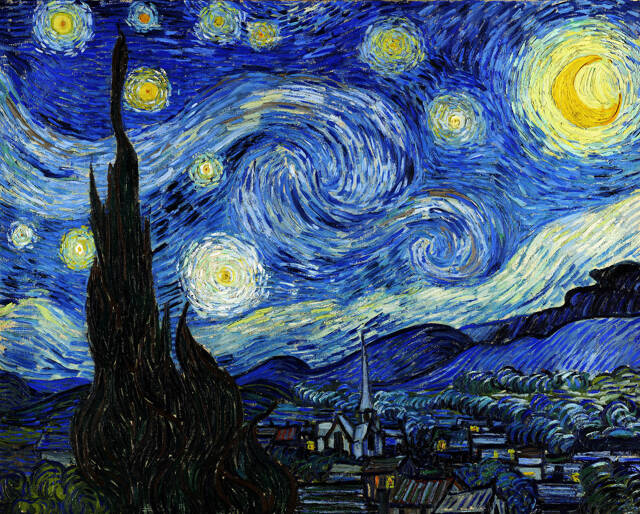Part amusement park, part magic mushroom-like trip, the Van Gogh Immersive Experience puts you in a room that blooms, shimmers and rains flowers. It is astonishing, a step beyond any art museum exhibition.
It’s also expensive: Adult tickets are $36 for the exhibition, which moved into a Seattle warehouse on Occidental Avenue back in October. As with anything hyped as much as this show is, there are glowing reviews and there are bitter complaints about the price.
Gazing up at Vincent Van Gogh’s paintings, animated and set to classical music, I wondered: How do you put a dollar amount on experiencing art such as this? Down the street at T-Mobile Park, where the Seattle Mariners play, you can shell out much more than $36 for a ticket, a beverage and a hot dog. Dinner out with wine? Same thing.
The experience, using video mapping technology, turns the paintings of Vincent Van Gogh (1853-1890) into a motion picture that surrounds you with French wheat fields and flowers, the Rhone River and a surreal night sky — and then adds several quotations from the artist. Many of them come from Van Gogh’s letters to his brother Theo, his best friend and the one who supported him for much of his life.
“What would life be,” Van Gogh asked, “if we didn’t have the courage to attempt anything?”
“Normality is a paved road: It’s comfortable to walk, but no flowers grow there.”
My favorite: “There is nothing more truly artistic than to love people.”
When I go to an art exhibition, I’m hoping to expand the way I look at the world. On this front, the Van Gogh experience delivered in spades. I recommend it to anyone who is curious about an artist’s mind, heart and connection with other beings.
Yet there is, dare I say, an elephant in the room. Van Gogh had a very tough time of it. The truth of his life and death are heartbreaking: He suffered from mental illness; he died at age 37 from a self-inflicted gunshot. The artist reportedly considered his 1889 work “The Starry Night,” which would become one of his enormously famous paintings, to be a failure.
“I put my heart and soul into my work,” he wrote, “and I have lost my mind in the process.”
Van Gogh’s torment is mentioned in the exhibition text, but only briefly. Of course I don’t expect a blockbuster show such as this to dwell on the artist’s suicide. But as I experienced the experience, many questions came to mind.
Why did this man, so magnificently gifted, die destitute, having sold one painting?
How is it that his canvases are so exuberant, in extreme contrast to his sadness?
What does Van Gogh’s art teach us about life, 135 years later?
Yes, there are books and movies about the artist: Lots to explore when pondering such things. “The Yellow House: Van Gogh, Gauguin and Nine Turbulent Weeks in Arles” by Martin Gayford looks especially good.
To date, more than 100,000 people have come to see the Van Gogh experience, according to John Zaller, its executive producer at Exhibition Hub, presenter of the show. And that’s just in Seattle. Van Gogh immersives have appeared in about 40 other U.S. cities and in Europe and Asia.
The Dutch post-impressionist is the chosen one, Zaller said in an email, because he’s “a bit of a rock star in the art world.”
Van Gogh’s art, with its yellows, blues, greens and golds, is highly accessible, Zaller said, adding the movement in these paintings, applied by Van Gogh’s brushes, is conducive to today’s digital animation technology.
The Van Gogh experience will stay at its venue on Occidental Avenue for a few more months. My opinion is that the show is worth its ticket price. My hope is that seeing it will — like all art shows, be they simple or complex — inspire people to ask questions and wonder aloud with one another.
________
Jefferson County senior reporter Diane Urbani de la Paz can be reached at 360-417-3509 or durbanidelapaz@peninsula dailynews.com. Her column runs the first and third Wednesdays of the month; the next will appear Jan. 19.

